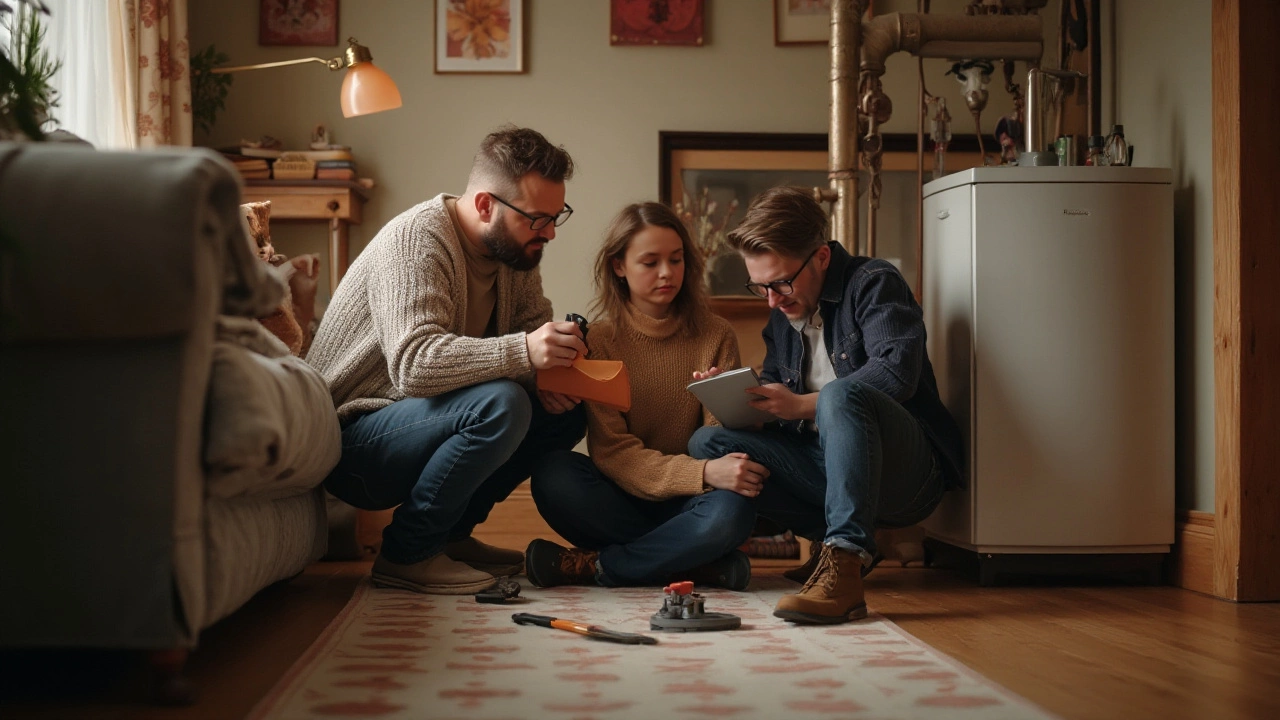DIY Boiler Fix: Quick Ways to Spot and Solve Common Heating Issues
Got a chilly house and suspect the boiler? Before you call a pro, try a few simple checks you can do yourself. Most boiler hiccups are easy to spot and often fixable with a screwdriver, a bit of patience, and the right safety steps.
Check the Basics First
Start with the obvious. Make sure the boiler’s power switch is on and the thermostat is set to a temperature higher than the room. If the pressure gauge reads below 1 bar, the system may need topping up. You can add water via the filling loop – just follow the pipe’s label and watch the gauge climb to the recommended range (usually 1.0‑1.5 bar).
Next, look for any error codes flashing on the display. Most modern boilers have a quick‑reference guide that translates the code into a common problem, like a faulty pump or a temperature sensor. Write down the code, then search the guide for a short fix – often it’s just resetting the unit.
Fix Common Issues Without Calling a Pro
If the boiler won’t fire up, the first thing to try is a reset. Turn the boiler off, wait 30 seconds, then switch it back on. This clears minor electronic glitches. If you hear a banging or whistling noise, air could be trapped in the radiators. Bleed them using a radiator key: open the valve, let out the air until water runs steady, then close it.
Leaking water is another frequent problem. Small drips often come from a loose pressure relief valve or a cracked pipe joint. Tighten any loose nuts with an adjustable wrench, but never force them. If the leak persists, it’s likely a seal that needs replacement – a basic DIY swap if you’re comfortable with a little disassembly.
When the boiler trips the reset button repeatedly, the thermostat may be faulty or the flame sensor dirty. Clean the sensor with a gentle brush, then reinstall. If the issue repeats, double‑check the thermostat wiring; a loose connection can cause intermittent signals.
Lastly, keep an eye on the boiler’s annual service schedule. Even if you can handle minor fixes, a professional service once a year clears out sludge, checks the gas valve, and ensures safety compliance.
Remember, safety comes first. Never work on a gas‑connected boiler if you smell fuel or see a strong smell of gas – evacuate the house and call your gas supplier immediately. For anything involving gas lines, the best choice is always a qualified engineer.
By doing these quick checks, you’ll save time, money, and the hassle of a cold shower. Most everyday boiler glitches are within reach of a confident DIYer – just follow the steps, stay safe, and enjoy a warm home again.
DIY Boiler Repair: Fixing Your Boiler Safely and Effectively
0 Comments
Boilers are crucial for home heating, especially in colder months, but when they break down, the question of whether you can fix them yourself arises. This article delves into the feasibility of DIY boiler repairs, highlighting common boiler issues, essential safety tips, and situations where professional help is necessary. Understanding the workings of your boiler can assist in minor fixes and improve maintenance practices. The guide aims to help you make informed decisions and potentially save costs on boiler repairs.
Read More